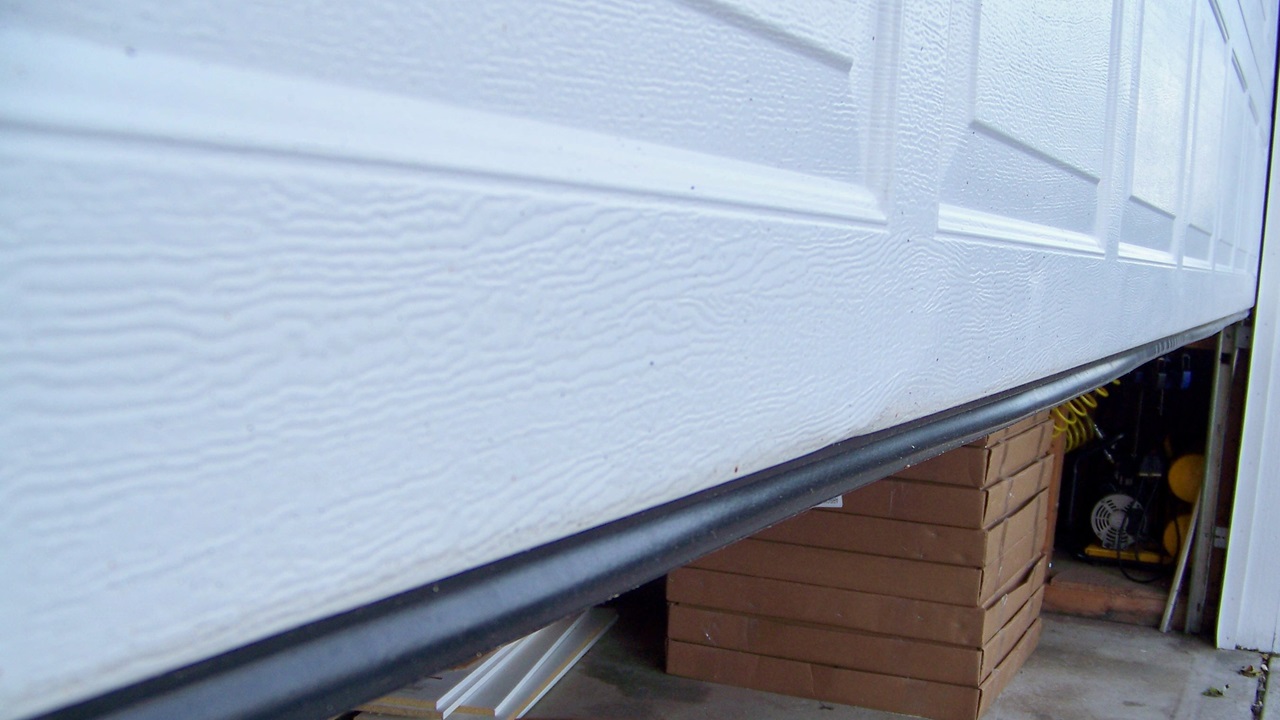Garages serve many purposes beyond car storage. They often house tools and gardening equipment or are transformed into versatile spaces like a home gym, studio, workshop, or extra bedroom. Among the crucial components of a garage door is its weather seal. A worn-out bottom seal poses risks such as energy loss, compromised security, and potential damage to garage contents.
This blog explores various types of bottom door garage seal, highlighting their benefits and how they enhance the comfort and safety of your garage.
What Is a Garage Door Bottom Seal?
Garage door bottom seals, typically crafted from vinyl or rubber, are prone to wear out over time. In older garage doors, it's common for parts of the seal to remain intact while others may crack, permitting air and water infiltration.
Replacing a worn seal is a manageable do-it-yourself task, provided you disconnect the door from the automatic opener, partially open it, and secure it to the rails with clamps. However, selecting the proper seal is crucial, considering factors like door thickness and the condition of the garage floor.
Additionally, a retainer, a metal or PVC bracket that attaches to the underside of the door, influences the seal choice. Track systems secure the bottom seal of the door. If your door lacks a retainer, you can install one yourself. Conversely, if the existing retainer is damaged, it's advisable to replace it.
6 Different Types of Garage Door Bottom Seals
U-Shaped Beaded Garage Door Bottom Seal
The U-shaped beaded door seal is a flat piece of rubber or vinyl featuring beaded edges. It slots into tracks on a retainer fixed along the bottom of the door. With a width exceeding that of the door's thickness, fitting it into the retainer tracks creates a U shape that compresses against the pavement when the door shuts.
This seal type is particularly effective on uneven pavement, thanks to its flexible material that can adapt to fill depressions. Available in widths ranging from three to six inches, you can adjust for deeper depressions by opting for a wider strip.
T-Style Garage Door Bottom Seal
T-style garage door seals are widely available across various outlets. The T-style cross-section denotes the shape of the channel that fits into the track on the retainer. The seal ensures a watertight seal and prevents lateral movement, minimizing interference with the door's operation.
Notably, bulb-shaped and U-shaped beaded seals come with rounded and T-shaped channels. Therefore, when purchasing a door bottom sealer, verifying the shape of the tracks on your existing retainer is essential. Rounded and T-style tracks are not interchangeable, so compatibility is critical.
Garage Door Threshold Seal
A garage door threshold seal is an effective solution in instances where the floor underneath the garage door is too uneven for a bottom seal to effectively close all gaps.
Typically crafted from durable rubber or vinyl, the threshold seal features an elevated middle section that tapers off on both sides. It is designed to withstand vehicular traffic and efficiently seals the bottom of the door independently when installed correctly. It can be paired with a bottom seal for optimal results, enhancing its effectiveness.
J-Style Bottom Garage Door Bottom Seal
A J-style bottom seal is designed to fit into a single-track retainer and comprises a flap that bends to resemble the letter "J" when the door is closed. Some variants feature two flaps, one bending towards the outside of the door and the other towards the inside.
This seal type offers reliable protection against rain and wind. Notably, it often comes with its retainer, making it a suitable choice for wooden garage doors lacking one. It's crucial to ensure that the retainer width matches the door thickness. Installation involves fitting it onto the bottom of the door and then securing it to the outside with nails or screws.
Bulb-Shaped Garage Door Bottom Seal
A bulb-shaped bottom seal, or tube seal, is a length of rubber or rubberized vinyl formed into a closed loop with a circular or oval cross-section. It features a channel on the top of the loop that fits into a corresponding track in a retainer fixed to the bottom of the door.
When the garage door is closed, this seal flattens against the pavement, effectively sealing out the elements. Its functionality is akin to that of a beaded seal. Since it only requires a single track, it's most suitable for doors equipped with that type of retainer. Nevertheless, bulb-shaped seals are available to accommodate doors with two-track retainers.
Self-adhesive weatherstrip Garage Door Bottom Seal
Similar to a sweep for your front door, a self-adhesive weatherstrip adheres to the bottom of the door from the outside. Upon closing, the rubber seal presses against the pavement and spreads outward, creating a seal.
This weatherstripping variant is ideal for wooden canopy and retractable doors that swing out and up when opened. It can also be applied to sectional and rolling doors for effective weatherproofing.


